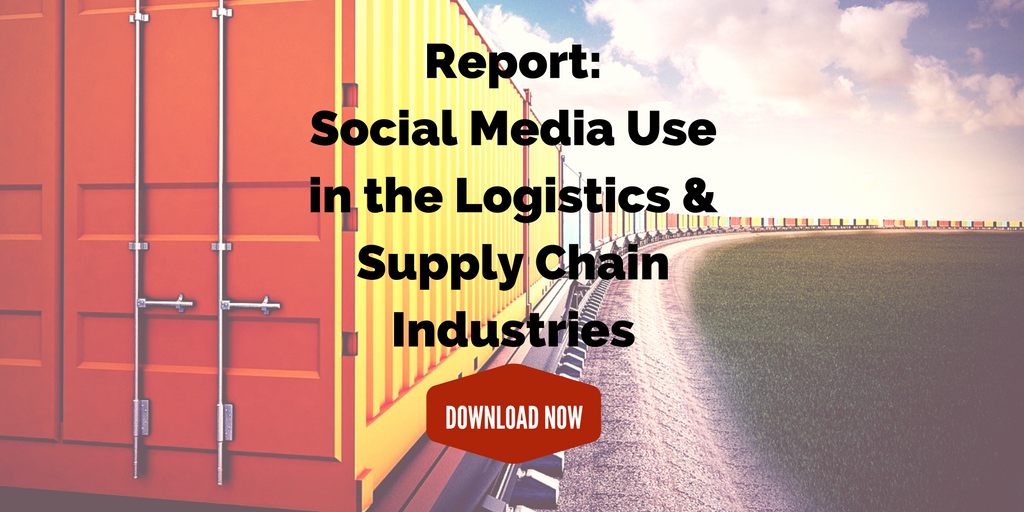
by Elizabeth Hines | Dec 1, 2016 | Blog, Logistics, Strategy, Supply Chain
Consumer expectations of expedited, free shipping come at a cost to e-commerce businesses — but is it worth it?
The race to deliver orders at an ever-increasing pace — free of charge — is raising the stakes for shippers and retailers. Everything from the size of packaging to the selection of the right carrier has to be examined to prevent e-commerce ventures from becoming financially unviable.
While Amazon, the uncontested super power of e-commerce, has been known to rack up big losses to gain market share, smaller players are battling to meet consumer expectations of two-day, next-day, or even same-day delivery. The Amazon effect also means consumers are less willing to pay anything at all for shipping.
As free shipping is becoming a prerequisite for building customer loyalty, retailers know that charging even a minimal amount to deliver the product can break the deal. If the cost of shipping is perceived to be excessive, 63% of consumers surveyed by Jupiter Media Metrix will cancel the purchase.
In addition, consumers have grown accustomed to adding on smaller items to qualify for free shipping. But those items — one-ounce face creams, eye shadow, ear plugs — frequently arrive at their destination at significant cost. Jupiter found, for example, 45% of companies lose money on shipping.
Shippers also pay the price as small items do not necessarily come packaged in small boxes, consuming valuable space at a time when U.S. trucking tonnage is at record highs. FedEx and UPS both made headlines early last year when they, despite low fuel prices, raised shipping rates, partly as a result of dimensional weight pricing.
Now standard industry practice, dimensional weight pricing is estimated to have increased parcel shipping costs by as much as 20%, an additional expense ultimately passed on to consumers as well as small business owners. And with e-commerce forecast to grow from $392 billion this year to $491 billion in 2018, according to eMarketer Projections, demand will remain high at the same time as the shortage of drivers appears to have no real solution.
Pressure is likely to mount further as Amazon seems to be preparing to launch its own global package-delivery service that could rival those of competitors such as UPS and FedEx. With space on pallets a hot commodity, Amazon kicked off the year by adding thousands of trailers to its fleet, which is transported by third-party carriers. The online giant also hopes to build its own U.S. cargo operations to guard itself against delivery delays that affected some shoppers this past holiday season.
So what is the small business owner with a burgeoning e-commerce business to do?
Since it may be nearly impossible to rival the speed of Amazon Prime, focusing on keeping shipping costs to a minimum should pay off, advise several experts interviewed by Entrepreneur.
Steve Strauss, author and founder of www.smallbiz.com, a small-business consulting site, recommends businesses offer at least one express service and one standard service. “In this competitive environment where there’s very little customer loyalty, things like shipping matters. Look at it this way: If you don’t have a store location, you’re saving on rent and employees. Eat the shipping. It’s a small cost to you, and customers will respond,” he said.
What do you think is the key to staying competitive in the e-commerce space?
This post originally appeared on EBN online.
Related posts:

by Fronetics | Nov 30, 2016 | Blog, Content Marketing, Logistics, Marketing, Social Media, Supply Chain
Companies within the logistics and supply chain industries are increasing customer engagement, market and business intelligence, leads, and more by participating in social media.
Results from a previous Fronetics survey tell us that 100% of responding companies in the logistics and supply chain industries consider social media a strategic tool. So how are they using these platforms, and what benefits are they getting from participating?
Below, find some highlights from that survey.
By the way, if you’re interested in how companies in these industries are using social media, take our latest survey so that we can provide you with the latest results and trends. It takes about 3 minutes, and we’ll send you the new report once it’s completed.

Social media networks popular with the supply chain
According to the survey, the most popular networks are as follows.
- Twitter (94%)
- LinkedIn (86%)
- Facebook (77%)
YouTube (50%) and Google+ (45%) are networks which are also commonly used within the supply chain and logistics industries.
Reasons for using social media
Companies reported participating in social media for the following reasons.
- Increasing the visibility of their company (95%)
- Brand image (90%)
- Establishing the company as a thought leader (86%)
- Attracting new leads and customers (82%)
Top benefits realized from social media participation
Companies reported the following benefits.
- Customer engagement: 80% of respondents reported that they agree or strongly agree that by participating in social media, their company has realized an increase in customer engagement.
- Market intelligence: 80% of respondents also reported that they agree or strongly agree that their company has realized an increase in market intelligence.
- Business intelligence: 73% responded that they agree or strongly agree that their company has realized increased business intelligence through participation in social media.
Other top benefits included increased leads and increased demand for products and services.
You can download the full report below for more information on how your industry peers are using social media. And don’t forget to participate in our new survey so that we can send you the latest information.

Related posts:

by Jennifer Hart Yim | Nov 29, 2016 | Blog, Talent
The stigma around boomerang employees is disappearing, and that’s good for companies open to rehiring talent that previously left.
This guest post comes to us from Argentus Supply Chain Recruiting, a boutique recruitment firm specializing in Supply Chain Management and Procurement.
Here’s another one of the myriad ways that the world of work is changing: more than ever, people are returning to companies they’ve left in the past. Just as the stigma against changing jobs and careers has been vanishing in recent years, new data shows that companies are less likely to say “you’re dead to me” when an employee leaves, and more willing to rehire them if they want to return.
Time was, you’d leave a job and never look back. Now it appears that more and more employees are considering returning to companies they’ve left for a myriad of reasons — and companies, rather than taking a previous departure personally, are more and more likely to rehire them.
A changing workforce
We liked a recent article by Brendan Browne, LinkedIn’s VP of Talent Acquisition, about this dynamic, which is something that we’ve seen in some of our recent recruitment efforts. Browne offers some interesting stats about these so-called “boomerang employees” that say a lot about changing attitudes towards workplace loyalty:
- While companies used to hold a stigma against people who left their organizations only to want to later return, 76 percent of HR managers are now open to “boomerang employees” returning to previously held positions, or a different position at the same company.
- Employees, too, are becoming more likely to boomerang. Half of millennials would consider returning to a former employer, as compared with about a third of gen Xers and baby boomers, suggesting that the generation emerging into the workforce has a different attitude about “boomeranging” back into an old employer than previous generations.
The changing concept of “loyalty” in business
The hallmark of a successful, stable working life used to be staying at one company for your entire career. It’s possible that the stigma against rehiring past employees is a holdover of that mentality. What it comes down to is a changing attitude towards the concept of “loyalty” in business.
More companies are recognizing that many people leave jobs not because they’re completely unsatisfied, but because they have ambitions, dreams, and responsibilities elsewhere. Maybe they want to launch a start-up. Maybe they need to take time to care for a sick relative. Maybe their spouse got a new job and they moved to another city. Maybe they want to get experience in another industry, or a different market. Maybe a new opportunity has opened up within the company that they’ve always had their eye on.
Companies are realizing that employees aren’t always boomeranging because they’ve “failed,” and that those employees don’t necessarily see it as a step backward.
The benefits of boomerang employees
In short, companies shouldn’t take it personally when employees leave — especially if those employees have made the effort to avoid burning bridges — and they should think about the benefits of bringing them back if and when they want to return.
- For one, a “boomerang employee” will come in with a solid understanding of the company’s culture.
- Because you’ve shown a willingness to let them pursue other opportunities, and they’ve chosen to return, they’ll be a very loyal advocate for your company’s employer brand.
- They’re a known quantity. You’ll be able to save on training costs and the time it takes to get a brand-new employee situated, which means they’ll contribute to the bottom line sooner than a conventional hire.
- A boomerang employee might also be able to bring new experiences, new skills, and even new customer contacts to bear on the job — broadening the company’s horizons while also offering these other benefits.
It’s important to note that companies should put these “boomerang employees” through the same rigorous hiring process they’d apply to a new hire. You want to make sure that they’re still effective contributors, and you want them to be able to offer a compelling reason for returning. But if they can pass this test, they can be some of the best employees around. If they made an effort to maintain the relationship when leaving, there’s no reason to hold sour grapes when they want to return.
French journalist Alphonse Karr once said, “the more things change, the more they stay the same.” And we don’t think there’s anything wrong with someone applying that maxim to their careers!
Related posts:

by Fronetics | Nov 28, 2016 | Blog, Content Marketing, Marketing, Social Media
Supply chain companies can use influencers in their prospects’ network as a strategic tool to gain new business.
The term “influencer marketing” often brings to mind celebrities endorsing their favorite brand of bottled water or jeans — not an image that is particularly useful for B2B businesses. However, B2B marketers should be taking this powerful trend in content marketing seriously.
While your supply chain may not benefit from an endorsement by Jennifer Aniston, you likely have brand influencers at your fingertips, which you may not even realize. Effectively leveraging these endorsements is a strategic tool for gaining new business.
Developing an influencer marketing strategy
Once you’ve identified your natural influencers, here are three important steps for building an influencer marketing strategy for your company.
1) Know your target buyer.
Rather than a scatter-shot approach, making the effort on the front end to identify your target buyer personas allows you to strategically target your customers. Understanding their needs, challenges, and purchasing structures is the key foundation to any content marketing effort, and influencer marketing is no exception.
2) Identify your industry influencers.
Industry influencers aren’t just the big names, though those people are certainly influential. It comes down to how your buyers make their purchasing decisions. The 2016 B2B Buyer’s Survey Report found that nearly half of B2B buyers use peers and colleagues as a major information resource when choosing a vendor.
Who are those peers and colleagues whom your target buyers turn to? Use every resource at your disposal to determine how they get their information. Connecting on LinkedIn, Twitter, and other social networks is a great way to do this.
3) Use the right tools for your business.
Any effective content marketing strategy depends on using the most effective tools. In a post for CMS Connected, Leah Kinthaert makes a strong pitch for Twitter. She cites the ease of plugging in a hashtag or keyword in giving you “volumes of information — from who the influencers are in that industry to what today’s breaking news is on the topic.” Furthermore, clicking on a hashtag shows you what your competition is doing as well.
The bottom line is that influencer marketing can be an extremely effective aspect of a B2B business’ content marketing strategy. Knowing your buyers, finding your influencers, and effectively leveraging this information will help boost your social credibility, as well as generating new business.
Related posts:

by Elizabeth Hines | Nov 23, 2016 | Blog, Strategy, Supply Chain, Warehousing & Materials Handling
The evolution of driverless robotic vehicles continues unabated. But what will it take for them to overtake certain warehouse tasks?
A lucky few have already experienced it — the thrill of taking their hands off the steering wheel and letting the car take care of the driving. As a reporter from the Guardian rode in the driver’s seat of a multi-million euro research vehicle “Jack” by Audi on the autobahn, she observed it carried out maneuvers so smoothly “it felt like the car was participating in a courtly dance with others on the road.”
Despite such glowing reviews and the unabated evolution of driverless vehicles, Jack and many its counterparts will not be available for mass consumption for another decade or so.
AGVs and today’s warehouse
In the world of material handling, the notion of driverless has been around for 60 years since the first Automated Guided Vehicle (AGV) appeared in a grocery warehouse. High-tech warehouse operations are already used to the sight of AGVs performing tasks, such as the vertical storage and retrieval of pallets and the loading and unloading of pallets onto outbound trailers.
Driverless robotic vehicles, on the other hand, have generally been assigned to low complexity and repetitive horizontal movement of materials, as well as assisted order picking that involves a high degree of machine and human interaction. Although it may sometimes sound as if driverless vehicles are about to phase out forklift drivers altogether, Toyota Material Handling, which has developed an Autopilot AGV driverless forklift range, notes in a blog post that “there is still value in human operators in an automated warehouse. Human operators are far more capable of identifying issues in the immediate environment and any problems with picking orders. The role of the human operator in an automated warehouse will be more dynamic and varied as the ‘grunt work’ is now tasked to the automated system.”
This argument echoes the challenge that makers of driverless automobiles have expressed: In order for the technology to reach the next level of effectiveness, it has to assume “human” qualities. While the driverless car comes to a complete stop at the sight of a yellow light, the human driver is more likely to speed up to beat the red light, a fact that has been blamed for a number of collisions during testing of a Google autonomous vehicle prototype.
The potential of driverless vehicles
That being said, driverless robotic vehicles hold enormous potential. In an interesting webcast on DC Velocity — which addresses the technology’s role in distribution operations that include horizontal transport and full-case picking applications — two experts tout ROI and productivity gains.
DC Velocity Senior Editor David Maloney and Marc Wulfraat, president of global supply chain and logistics consulting firm MWPVL International, estimate a three-year ROI is possible and that 20-25% productivity gains for order picking are realistic, as long as certain obstacles are overcome. For example, old legacy applications rarely integrate well with newer real-time technologies. If the two are forced together, it may happen at the expense of speedy processes, thus negating the effect of why the driverless technology was introduced in the first place.
Maloney and Wulfraat explain: “In high-density full-case picking environments (e.g., grocery distribution), an order selector can pick 175 – 200 cases/hr or one case every 18 – 20 seconds. If a 5-second delay due to system latency is introduced, then this would result in a major decrease (19 – 24%) in order selection productivity to 141 – 157 cases/hr. In a facility shipping 1 million cases/week with labor cost of $23/hour fully loaded, this would add around $1.6 M of warehouse labor expense to the operation. Clearly, this type of technology cannot add any system latency, which suppliers are working hard to guarantee.”
Another challenge arises when multiple vehicles have to pass within the same operating aisle. Considering the minimum clearance that it takes for a robotic vehicle to pass another without safety sensors bringing it to a halt could pose a problem in distribution centers with narrow aisle widths.
Still, in the big scheme such challenges pale in comparison to how far the technology has already come. When it comes to automating the horizontal transfer of products in a warehouse or distribution center, driverless robotic vehicles are undoubtedly the answer.
What do you consider to be the main challenges to full-scale adoption of driverless robotic vehicles in the warehouse or DC?
This article originally appeared on EBN Online.
Related posts:

by Fronetics | Nov 22, 2016 | Blog, Content Marketing, Marketing, Strategy
By repurposing and thoughtfully packaging the content you have already published, you can assist your sales force in closing deals.
How many of your sales force’s calls turn into appointments? Probably very few. More and more of today’s buyers don’t want to speak with sales reps about products.
But, then, who will buyers speak to? A LinkedIn survey of 1,500 purchasers and influencers found that 86% of buyers will listen if sales professionals provide insights about their business. What’s more, 92% of buyers engage with a professional if that person is a known industry thought leader.
So, what if your sales force approached prospects not as a sales representative, but as a source of information, insight, and thought leadership? What if you already had the tools to help your sales staff achieve this reputation? If you are publishing original content, then you do.
Let them have content
Arm a sales rep with targeted content to share with prospects during specific moments in the purchase process, and it will advance his or her reputation as a source of knowledge. That can be the key to getting a foot in the door, advancing through the final stages of a purchasers’ decision, or closing the deal.
Here are four easy ideas for repurposing the content you have already created to assist your sales force.
1. Simply share.
Encourage sales representatives to follow your company and its content producers on social media and to share relevant articles with their networks. They can repost both your original content and curated articles as well.
2. Get visual.
Turn your evergreen content into easy-to-read infographics or another visual format. Send with the sales representatives to meetings with prospects, or encourage them to email the content to certain contacts as a lead-nurturing exercise.
3. Gather news.
In planning your content, you likely consider industry news, trends, and happenings. Keep a list of these points and supporting articles, and have the sales team distribute to their contacts on a regular basis, like a newsletter, to demonstrate knowledge of the business landscape.
4. Build case studies.
Develop several case studies from your company’s success stories. Organize them around specific pain points that your buyer personas face. Provide these to the sales team with a list of key points from each study to use as either talking points or to send as follow-up emails to prospects facing the same challenges.
These are a great starting point for bridging the gap between the marketing department and sales force with content. But don’t let it stop there.
Set up a role-playing exercise with your sales team, where you are the customer. Analyze their pitch and see how content can fill the holes. It’s likely you have built a lot of content around many of the reps’ talking points, which they can use to further inform their pitches and to use as lead-nurturing collateral.
Related posts:








